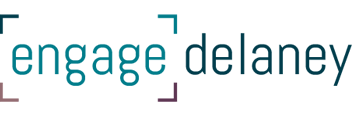Communicating in the Post-Truth Era: A Three-Part Special
In our January newsletter, I shared my top three engagement trends for 2017. One of them included the oversimplification of complex issues in a “post-truth” era. Oxford’s word of the year for 2016 was coined in part in order to describe Brexit and the US presidential election.
The Guardian characterized it as: an adjective describing a situation “in which objective facts are less influential than appeals to emotion.”
Well… this is challenging. At D+A, we always focus on fact-based information. We tell our clients that facts are what’s required and valued in an engagement. You’re engaging stakeholders to receive their input in the decision-making process – you are not selling an idea or a project. The reality, however, is that when people do get involved in projects, and want to engage, they are usually motivated by emotion. They feel excited for a new opportunity and want to have their say, or they feel threatened and want their voice to be heard. Either way, emotion becomes part of the narrative very quickly.
In this three-part blog on communications, I will share:
- Tips for communicating in emotionally-charged environments
- Tips for communicating to support broader engagement
- Tips for neutral communications
Tips for Communicating in Emotionally-Charged Environments
Life coach and planning designer Danielle Laporte’s Truthbombs are a mixed bag of inspirations for personal development, but one that directly applies to communicating in emotionally-charged environments is: Conjure up your worst case scenario. It will liberate you. Not only will it liberate you, I would suggest, but it will help you build a plan so that your worst case scenario never comes to life. If you are communicating in an emotionally-charged environment, do everything you can to understand your environment. Baseline your current reality by asking:
- Do your stakeholders not trust you?
- Are the decision makers feeling particular pressure from one group or another?
- Has there been misinformation out there?
- Is there a reporter or columnist who has reported rumour, not facts?
Then look to the future by asking: What does your worst communications scenario look like?
- Internal flip-flopping?
- Project delay or cancellation?
- Stakeholder distrust?
- Bad press?
Now, build your communications plan by asking: How am I going to not only avoid communications that fuel a charged environment, but also communicate to reduce emotion?
For example:
- You might facilitate an internal meeting to go over the communications plan before it’s launched (engaging beyond those who approve it, and accessing stakeholders who might be impacted by it).
- You might develop a project timeline graphic and demonstrate how delays in the engagement may impact the overall project.
- You might reach out to organized stakeholders and ask if you can have a conversation over coffee. Often, fear stops us from reaching out to our most “opposed stakeholder”, but these sessions can reduce emotion when you are on receive and genuinely listening.
- You might meet with a reporter, host regular editorial boards, and seek input from the media on what information they need to accurately report on your project.
The hardest part when it comes to communicating in an emotionally-charged environment is to check your own emotions at the door. You fail to serve your team when you add fuel to the fire. So tone it down, and vent at home over your drink of choice.



